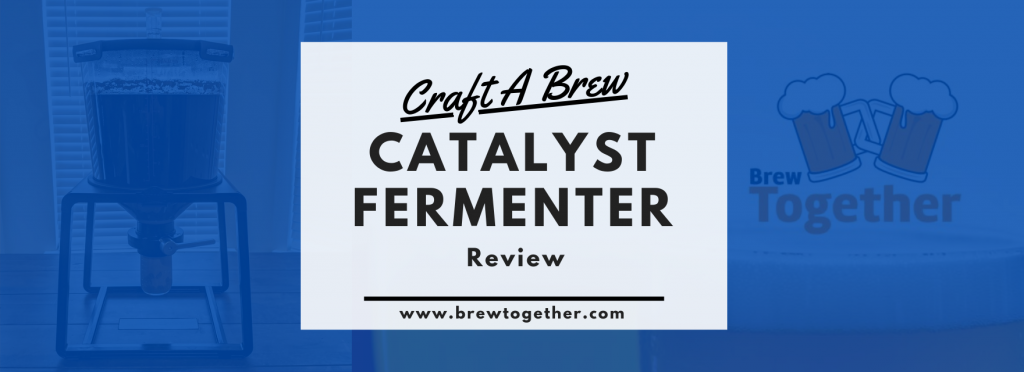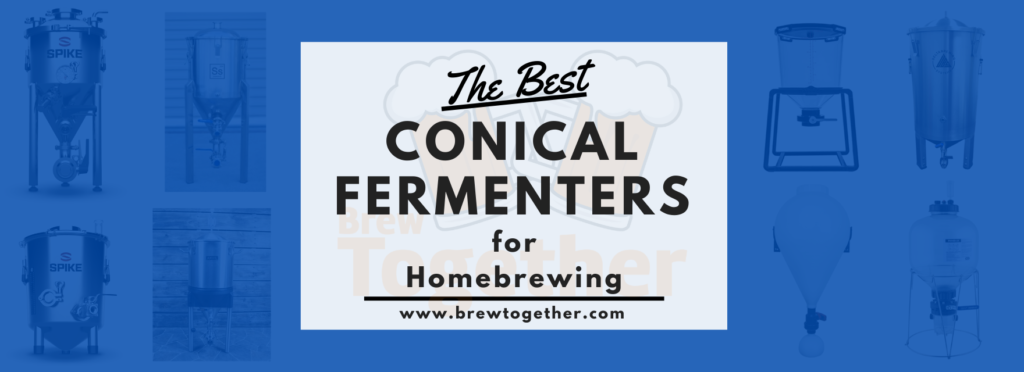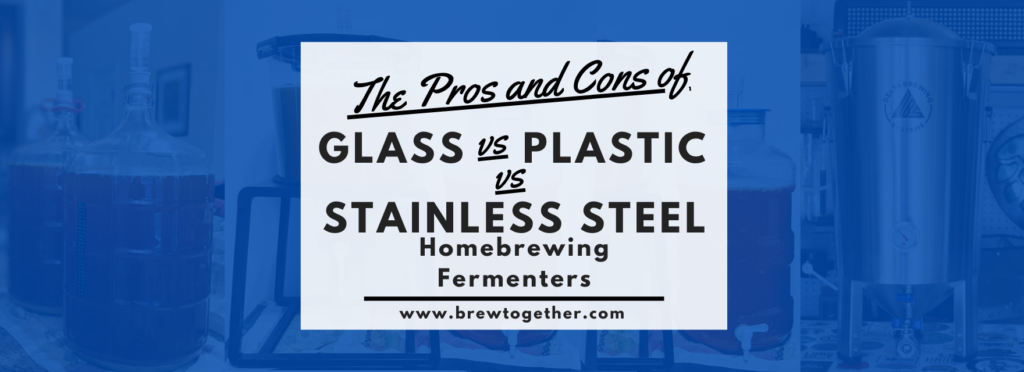Craft a Brew Catalyst Fermenter Review


Looking for a feature-packed conical fermenter without spending a fortune? Here’s our Craft a Brew Catalyst Fermenter Review!
Like most homebrewers, I got my start fermenting in plastic buckets and glass carboys. I heard too many horror stories of lost beer, deep lacerations, and even death from breaking a glass carboy. I eventually decided I didn’t want to risk using them anymore and started looking for a better option.
First, I tried a very low-priced option that still felt like an upgrade from the plastic buckets: a 6-gallon ported Big Mouth Bubbler. It worked pretty well overall and I still have it. It lacked most of the features of a fancier fermenter, and the thin, soft plastic it is made out of was not built to last forever.
I considered a stainless steel conical fermenter, but at the time there were no good options in my price range.
Luckily, that is no longer the case! Our friends at Delta Brewing Systems have produced the FermTank, a stainless steel conical bucket fermenter for under $200! Click here to see our review of the Delta Brewing Systems FermTank!
So, after a lot of research, I settled on the Catalyst Fermentation System from Craft a Brew. While the Catalyst is made completely out of plastic, the tank is constructed from Tritan®, a medical-grade, BPA-free polymer. Reviews indicated that it was much less prone to scratches than fermenter buckets or the Big Mouth Bubbler, so I ordered it and waited as patiently as possible for it to arrive!


Unboxing and Assembly
The Catalyst comes very well packaged in an attractive, well-designed box. It arrives unassembled, however assembly is very easy and took less than 5 minutes using the included tools. The box included:
- Conical tank at a 45° angle
- Lid and silicone gasket
- Stand (base, 2 legs, 2 sides, 8 screws)
- Allen wrench to assemble the stand
- 3” butterfly valve
- Bottling funnel
- Transfer tubing and flow clamp
- Airlock bung
- 16 oz. wide-mouth mason jar (you will need to provide your own 8oz wide-mouth mason jar for yeast harvesting).
After assembling the stand, you just need to thread the butterfly valve onto bottom of the tank and then the jar. The threads fit nice and tight and the silicone seal did not cause me any problems. One thing to note, the butterfly valve clicks as you turn the leaver and seems to be indexed to have several levels of open rather than a smooth open/close. It doesn’t cause any issues, so don’t worry if you hear a clicking noise when you turn the valve. I also had a bit of trouble fitting the silicone seal onto the lid for the first time, but once I had it figured out it wasn’t too difficult to do.
My first impression of the Catalyst as I put it together was that it is lightweight, but still has a very solid construction and was clearly made out of high-quality materials. I could immediately tell that the Tritan polymer that the tank was made from was a harder plastic than I expected. Overall, I was impressed and excited to get some beer in the tank!
Pre-Use Cleaning and Sanitizing
Cleaning and sanitizing the Catalyst was easy. The first time I used it, I cleaned it with hot water and PBW, rinsed well, and then filled the whole thing with Star San solution to make absolutely sure I had sanitized it thoroughly. Because the tank attaches to a butterfly valve and a jar, I initially worried there were too many seams for a batch-ruining infection to hide, but to this day I have never had a problem. Now, I just sanitize it before transferring the wort using a spray bottle of Star San solution, making sure to coat the whole surface.
I did run into one problem. The butterfly valve I received with my Catalyst had a small leak where the two halves of the valve were connected, and it would leak more when I opened or closed the valve. Craft a Brew immediately sent me a replacement valve (great customer service!) and I have never had a problem with the replacement. I haven’t heard a lot of other people have an issue, so I don’t think it’s anything to be concerned about. Their customer service was great and I was very appreciative of how fast they replaced the part.
Fermentation
Because the Catalyst is clear, you can see fermentation. I personally like this, because I enjoy watching the krausen form, proteins swirl, and eventually settle. The downside of a clear fermenter is that it makes the beer susceptible to skunking due to light exposure. If you don’t have a cool, dark place to ferment, you will need to cover the fermenter. I have used a t-shirt in the past that worked well, but Craft a Brew also has a thick vinyl tank cover with a closable viewing window that I recommend. It also has handles, which makes moving the full Catalyst around much easier.
The size and shape of the Catalyst make it a little too large to fit into most mini fridges or small chest freezers for temperature-controlled fermentation, and I personally don’t like the idea of heating the plastic tank. Unless you’re looking to make a major investment into a glycol chiller, I wouldn’t expect to control fermentation temperatures in it easily.


Do NOT accidentally leave the butterfly valve closed unless you’re removing the jar! I accidentally left it closed for a couple of days (luckily after fermentation was largely complete) and the jar built up a lot of pressure. Luckily, it did not explode, but when I opened the valve, it released so much pressure into the beer that it looked like it was boiling. It was definitely a bit of a scary experience!
No-Transfer Secondary Fermentation
One of the things that I was most excited about with the Catalyst was the ability to do a no-transfer move to secondary fermentation. By closing the butterfly valve, removing the full jar of trub, and then replacing it with a smaller jar, you have the option to pull the beer off of the trub and continue in fermentation. While the benefits of a secondary fermentation at the homebrew level is disputed and the risks of oxygenation and infection aren’t worth it, this is a nice feature for brewing beers with additions intended for secondary. You do allow a small amount of oxygen exposure when switching the jars, but in my opinion it isn’t enough to worry about on a homebrew level. Removing the trub also makes life a lot easier when it’s time to bottle or keg.
Yeast Harvesting
Another thing I really like about the Catalyst is the ability to harvest yeast extremely easily. After removing the jar from primary fermentation, the remaining viable yeast will settle into the small jar. To save the yeast, you simply close the butterfly valve, remove the jar, and seal it with a sanitized lid. Leave it in the fridge and you’re already ready for your next brew day!


Transfer
When it was time to transfer the beer to a keg, I started running into a little bit of trouble. I found the process closing the valve, disconnecting the jar, and connecting the bottling/kegging funnel attachment and tubing a bit awkward. It is also very prone to clogging, so you need to make absolutely sure that there is no hop or grain matter left when you attach the transfer assembly. Also, remember to remove your airlock before transferring, and if you’re worried about oxygenation, run a hose from a co2 tank into the top and slowly let some co2 in as you transfer.
This was my only real complaint about the Catalyst, so I was THRILLED when they came out with a ⅜” ball valve and racking arm assembly that could be added to the Catalyst. I bought it as soon as it became available and installed it. It was easy to do, but it was a little stressful drilling a hole in a $200 piece of plastic! It was definitely worth adding the port, as it made sampling and transferring a much easier process. With this addition, I really like the Catalyst and plan to keep using it even though I have largely moved to using Delta Brewing Systems FermTanks as my main fermenters.
Cleaning
Cleaning the Catalyst is extremely easy. Because it disassembles into small parts, it cleans up well in a few minutes. I usually use hot water and PBW, making sure to pay close attention to the threads, butterfly valve, and lid gasket. Technically, the Catalyst is dishwasher safe, but it doesn’t fit in my dishwasher, so I haven’t tried it
Overall Catalyst Fermenter Review
Overall, I am a fan of the Catalyst and I recommend it. I think it is the best plastic fermenter available and a great way to try a conical fermenter for a relatively reasonable price.
If you’re looking to get the Catalyst, I definitely recommend adding the ⅜” Ball Valve Assembly for transferring, and I would get the cover as well. With those additions, it brings the total price to $260, which is a bit steep.
While the Catalyst is a great fermenter with a lot of features, the price point is so close to a few good stainless steel fermenters and costs more than a Delta Brewing Systems FermTank. If the Catalyst was about $100 less, I’d enthusiastically recommend it as the best way to get started with a conical fermenter. Still, I like my Catalyst fermenter and recommend it as a great option for a fermenter upgrade!
Do you have a product that you would like us to review? Contact us here!
Affiliate Disclosure: BrewTogether is a participant in various affiliate programs, including the Amazon Services LLC Associates Program, an affiliate advertising program designed to provide a means for us to earn fees by linking to Amazon.com and affiliated sites. Some of the links in this article are affiliate links, which means that if you choose to make a purchase after clicking the link, I will earn a small commission at no additional cost to you, which helps offset the cost of running BrewTogether. Please feel free to reach out with questions. Thank you so much for your support!
Thanks for Reading!
Do you still have questions about the Craft a Brew Catalyst Fermentation System? Do you have an experience with this fermenter that you’d like to share? Leave a comment below or post in the forums!
Thank you for reading! If you like this article, it would mean the world to us if you would share it with your friends using the social media share buttons below.
If you’re not a member of BrewTogether, we’d love for you to join! BrewTogether is completely free, and signing up is easy! Click here to join!








Responses